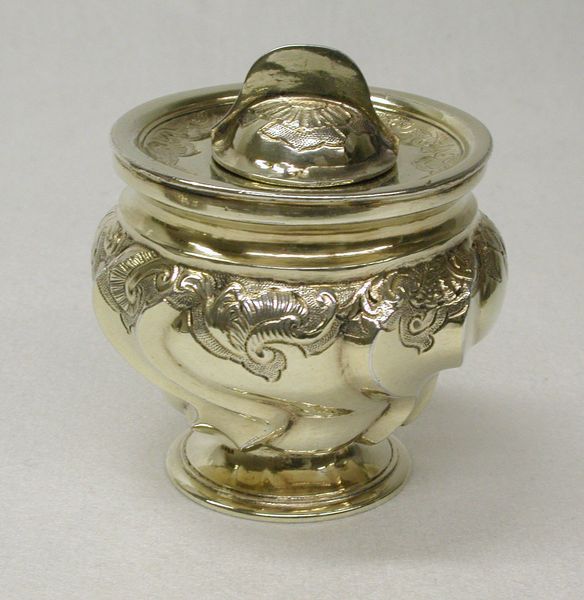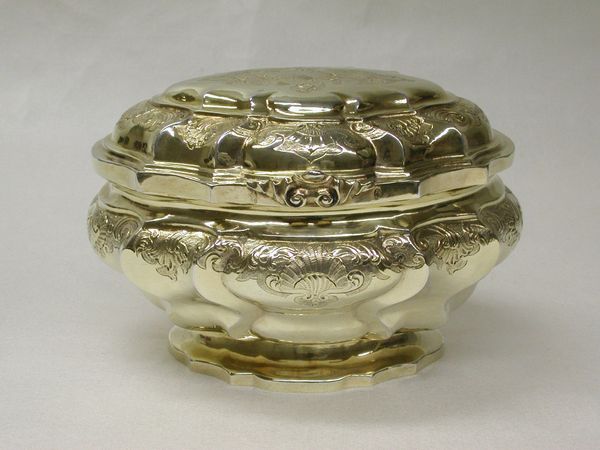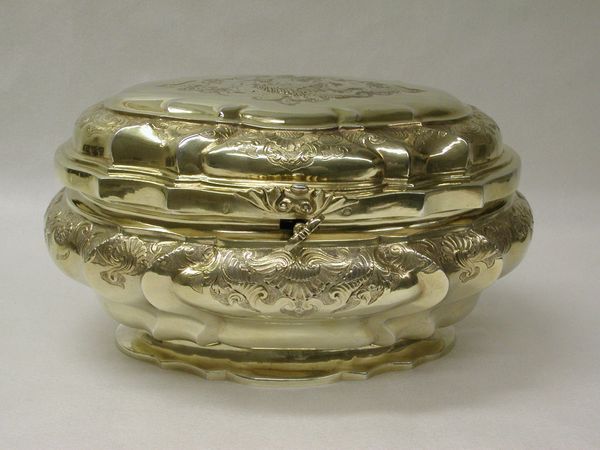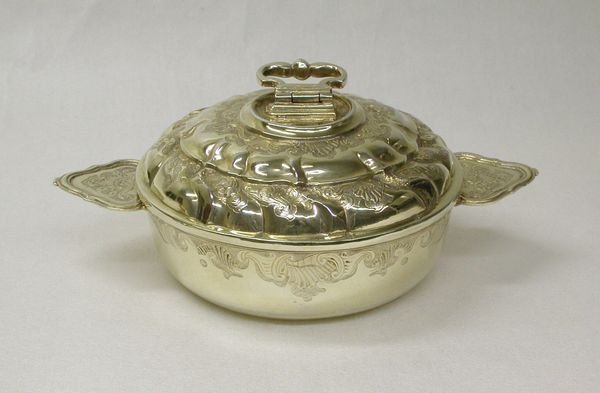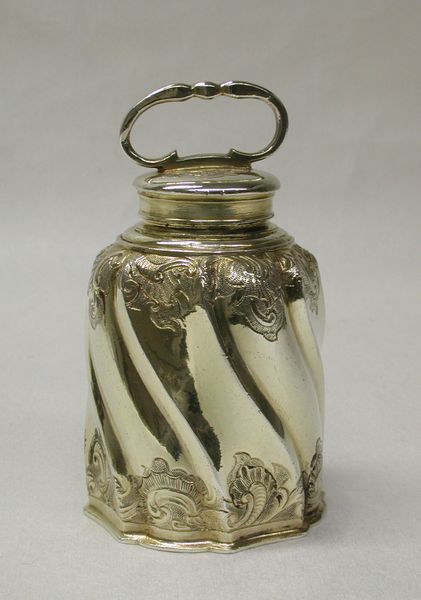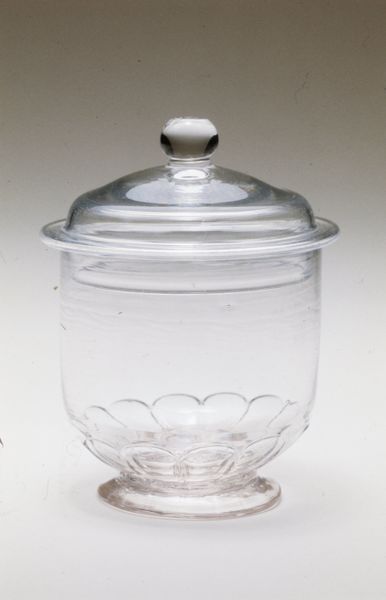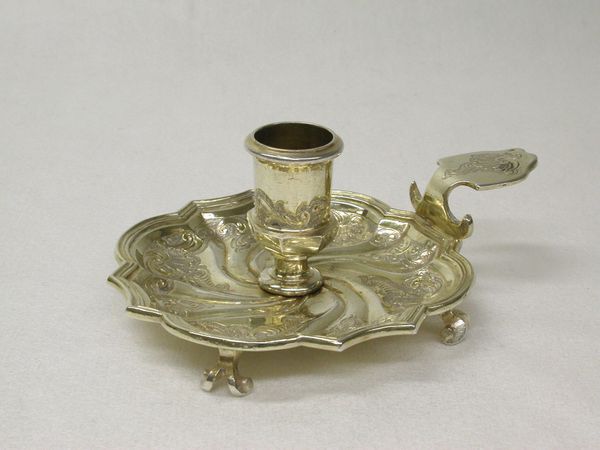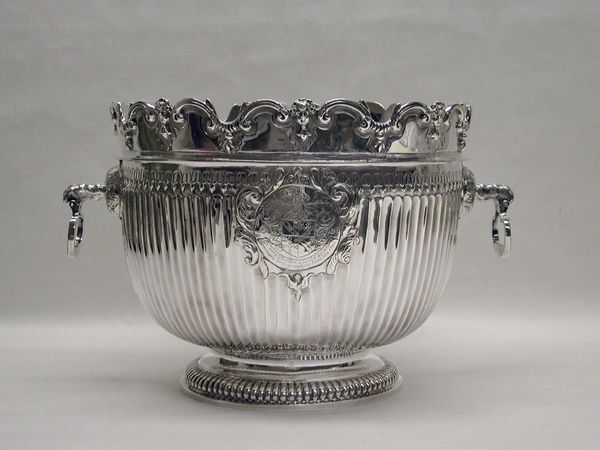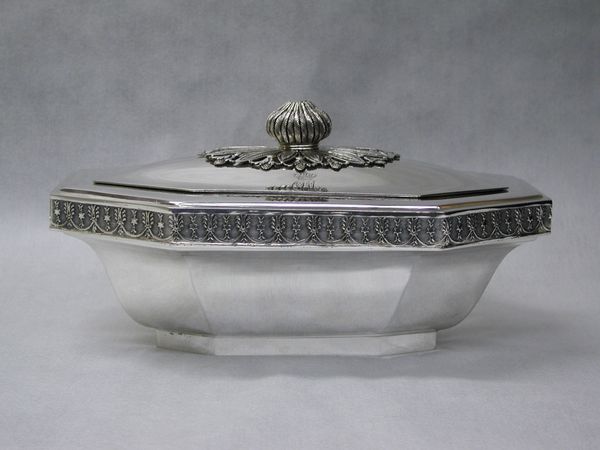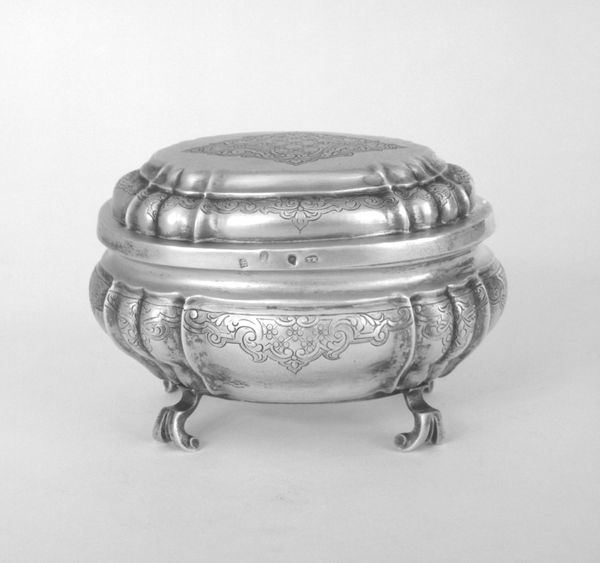
ornament, silver, metal, sculpture
#
ornament
#
silver
#
baroque
#
metal
#
sculpture
#
sculpture
Dimensions: Overall: H. 2 1/8 x Diam. 2 1/8 in. (5.4 x 5.4 cm)
Copyright: Public Domain
Editor: Here we have *Sandbox*, made by Abraham Drentwett IV, sometime between 1738 and 1750. It’s a silver ornament or sculpture, currently held at the Metropolitan Museum. Its compact size is what strikes me; it feels precious. How do you interpret its role as an ornament? Curator: I see it as a window into 18th-century social hierarchies and gendered spaces. These "sandboxes" weren’t filled with sand for play; they were containers for finely ground pounce, used for absorbing excess ink on documents and letters. Who would have used an object so ornamented, and what does it say about literacy and privilege? Editor: So, literacy wasn’t universally accessible? Curator: Precisely. Consider who had the time, education, and resources for elaborate correspondence. The delicate silverwork speaks to wealth, but also perhaps to a specific, gendered performance. Women of the upper class were often tasked with managing correspondence, cementing social bonds and family networks. This object embodies a very specific position. Do you see that performance embedded in this ornament? Editor: I do now, understanding it wasn’t *just* for practical use. It signifies status and participates in specific social rituals. Curator: Exactly. The Sandbox then isn’t merely decorative; it's a coded artifact revealing societal structures around communication, gender roles, and the uneven distribution of knowledge. Editor: Thinking about it in this way adds so many layers to the piece, beyond its aesthetic value. Curator: Indeed. Analyzing art through historical context and critical theory makes even a seemingly simple object a complex, revealing text.
Comments
No comments
Be the first to comment and join the conversation on the ultimate creative platform.
